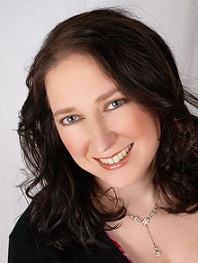 In this special guest feature, Pamela McGlone, VP of Customer Experience Transformation at Alorica, discusses the dangers of allowing what data scientists refer to as an observational bias known as “The Streetlight Effect” whereas the truth is often sitting outside where the light falls. Pamela and her team help their clients navigate the darkness to make lives better, improve customer experience and reduce costs. For more information about using data to fuel customer experience transformation please read her eBook “What the [Bleep] Should I Do with All this Data?” currently available for download here.
In this special guest feature, Pamela McGlone, VP of Customer Experience Transformation at Alorica, discusses the dangers of allowing what data scientists refer to as an observational bias known as “The Streetlight Effect” whereas the truth is often sitting outside where the light falls. Pamela and her team help their clients navigate the darkness to make lives better, improve customer experience and reduce costs. For more information about using data to fuel customer experience transformation please read her eBook “What the [Bleep] Should I Do with All this Data?” currently available for download here.
Reflect back for a moment and think of your last AMAZING customer service experience. The experience you had probably had little to do with luck. The experience was amazing by design. In fact, the world’s most valuable brands make it easy for customers to solve issues, using customer preferred channels, in a personalized manner. It’s smart business, after all. Customers spend 2.4 times more of their hard-earned money with brands they love compared to brands they loathe. That’s according to research published in the Harvard Business Review based on customers rating their brand experience as a 10, compared to customers who rate their experience 1 through 3 on a scale of 10 [i]. So, how are contact centers leveraging data analytics to ensure their agents are creating world-class experiences?
In a customer engagement center, the people are the product, so most leaders focus their data analysis on improving their agents’ proficiency. That’s often because data on agent performance, like Average Handle Time, Efficiency and Process Compliance is cleanly measured, plentiful and easy to action. Agent behavior can then be modified using training, coaching and various motivational techniques. This traditional approach, however, is too narrow, suffering as it does from what data scientists refer to as an observational bias known as “The Streetlight Effect.” [ii] This bias gets its name from the parable often used to describe it:
Late one night, a police officer finds a man crawling around under a streetlight. The man tells the officer he’s looking for his wallet. When the officer asks if he’s sure this is where he dropped the wallet, the man replies that he thinks he more likely dropped it across the street. “Then why are you looking over here?” the befuddled officer asks. “Because the light’s better here,” explains the man.
The moral of the story is that people often naturally seek easy answers where the light is better and requires minimal effort. Whereas the truth is often sitting outside where the light falls. Unlocking that insight is the secret to driving transformative change.
Our mission as customer experience experts is to shine light on critical customer stories so we can bring problems out of the darkness where they can be solved. The important stories are the ones with the biggest impact on driving revenue, inducing loyalty and controlling cost.
Working extensively with a well-known computer manufacturer, we saw the power of data first hand. Their traditional approach to improvement was to measure customer experience scores and resolution rates of their agents. They distributed surveys after a support ticket was closed and then used that customer feedback data to better handle common customer support requests. While this is a necessary step to improve behavior, the analysis can’t stop there.
We knew that hiding in the darkness was a more compelling set of data about the biggest drivers of cost and customer churn. For example, which types of support requests resulted in the most contacts, the highest probability of a call back and the lowest likelihood of a positive outcome?
By isolating various technical support requests by type, we replicated the customer experience from beginning to end. After dissecting and analyzing these experiences, we determined that, on average, 35% of the manufacturer’s technical support calls existed because the customer tried to do something on their own and failed. By detecting what customers were trying to do, and failing at, with the technology they had purchased, was critical to building the solution we recommended that reduced our client’s costs by 15% and improved the customer experience by providing more effortless resolution for customers. The solution, which made it easier for customers to succeed on their own, was only possible by venturing out into the dark data to find answers.
It’s only getting harder to be competitive in today’s customer experience economy and companies must transform to succeed. What important stories are hiding in the dark corners of your customer experience today?
[i] Peter Kriss. “The Value of Customer Experience, Quantified.” Harvard Business Review, August 1, 2014.
[ii] David H. Freedman. “Why Scientific Studies Are So Often Wrong: The Streetlight Effect.” Discover Magazine. December 10, 2010. http://discovermagazine.com/2010/jul-aug/29-why-scientific-studies-often-wrong-streetlight-effect
Sign up for the free insideBIGDATA newsletter.




Speak Your Mind